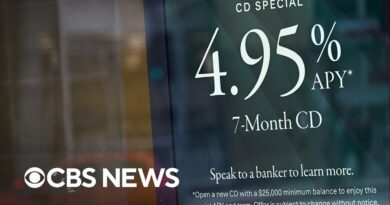Your brain doesn’t want you to save money. Here’s why
The question was a fair one.
“When do we hold people personally responsible to save for themselves? The math isn’t that hard.”
The query came from a participant at a conference this week at North Carolina State University sponsored by the Institute for Emerging Issues. Experts were gathered to debate and discuss weathering financial storms and the challenges to saving.
Many folks who are wired to save can’t understand those who don’t prioritize building an emergency fund or share their awe at the power of compound interest. Born savers don’t wait to take full advantage of an employer’s 401(k) contribution matching program — seriously, who leaves money on the table?
The reason it’s so hard to save is partly attributable to behavioral science, according to Mariel Beasley, co-founder of the Common Cents Lab and principal at the Center for Advanced Hindsight at Duke University.
To answer the man’s question, Beasley used an illustration of a small rider sitting on top of an elephant. It’s a metaphor based on the research of social psychologist Jonathan Haidt.
The rider represents the rational part of the brain. The elephant stands in for your emotional side.
In a perfect world, the rider and elephant work together. But, as you know, we aren’t perfect, and often the rider can’t control the much larger elephant operating on instinct.
“Now a rider can kick that elephant as hard as he wants, but unless the elephant also wants to go where the rider wants to go, it’s not going to go there,” Beasley said.
We often think — as the participant at the workshop did — that the logical part of our brain is mostly in control. Or should be. That’s why there’s a propensity to blame an individual for not having the willpower to save.
“Unfortunately, a lot of the times when we’re talking in hypotheticals and we say, ‘But people can do this, or people can do that, or ‘I do this, I do that,’ we are thinking about the rider, not our elephant,” Beasley said.
When we seek to shame people for their financial shortcomings, we neglect to recognize the barriers they face. We also don’t acknowledge the path the rider and the elephant are on, which includes lots of roadblocks, such as the ease or credit.
“They are operating in a culture that is there to extract, extract, extract,” she said.
We have an economy built and dependent on consumer spending. We are overwhelmed with advertisements to spend; how many commercials feature people happily saving for a rainy day?
“Even facing a dip in savings, elevated inflation and higher interest rates, consumer spending fueled a surprisingly strong economy in 2023 that expanded by 2.5% for the year,” according to a report by U.S. Bank. “In 2023’s fourth quarter, personal consumption expenditures represented nearly 68% of the nation’s GDP. Much of that spending requires financing, some for bigger ticket items like homes, automobiles and higher education and some in the form of credit card debt for day-to-day purchases.”
As Beasley put it, we tend to do things that are:
We are physically and psychologically wired for ease. Knowing this, financial institutions have sped up the spending process. You no longer even have to punch in a code to pay with plastic. You can just tap your card.
We like immediate gratification or rewards. Look at credit cards. If you use your card enough, you earn free airline tickets or cash back. Reward cardholders like to brag about all the swag they get for charging their purchases.
Who brags about saving? Until interest rates rose recently, the interest paid on deposit accounts was so tiny it made you sad to save, like you were being a chump.
Saving is boring because the payoff is often in the future. You have to fight the elephant in you that says, “Go ahead and spend that money, honey. Let’s have some fun now.”
“All of the behavioral science research shows that we underestimate the influence of our environment on our decisions,” Beasley said during a follow-up interview.
Social media makes it hard not to resist emulating the luxurious lifestyle of the rich and wannabe rich, who are in debt trying to keep up appearances.
We are bombarded with images of consumption.
“We see all of the people who are out eating,” Beasley said. “We don’t see the nights people chose to stay home and did something free or low-cost.”
We see the vacations people go on, not what they’re putting away in a retirement account.
During her presentation, Beasley pointed to a Federal Reserve Bank of Philadelphia research paper that showed if your neighbor wins the lottery, you are more likely to file for bankruptcy protection.
That was a “Wait, what?” moment in her talk.
“What happens is, if your neighbor wins the lottery, their consumption goes up,” she said. “You see that consumption and subconsciously your consumption goes up as well.”
It helps to understand the science.
“Savings behavior is particularly difficult because it’s not easy, it’s not immediately rewarding and is not visible,” Beasley said.
Okay, so once we understand why saving is difficult, how do we motivate ourselves and others to overcome the emotional side of our brains that drives decisions not in our best interest?
How can we make savings more desirable and visible?
“When we talk about behavioral science, we’re not talking about changing people, we’re about changing the tools,” Beasley said.
For instance, saving rates increased in one program when people got cards that were punched every time they made a deposit.
People can save for retirement on their own. But we know that when employees have access to a workplace retirement plan, they are more likely to save. Adding an automatic escalation feature in a plan also helps. For example, a company could set it so an employee’s contribution rate automatically increases by 1 percent each year, up to a certain maximum such as 15 percent.
“Lots of businesses are using our psychology to entice us to spend,” Beasley said. “What we need to do is use that same understanding of the brain to get people to do things that are better for their long-term well-being.”




